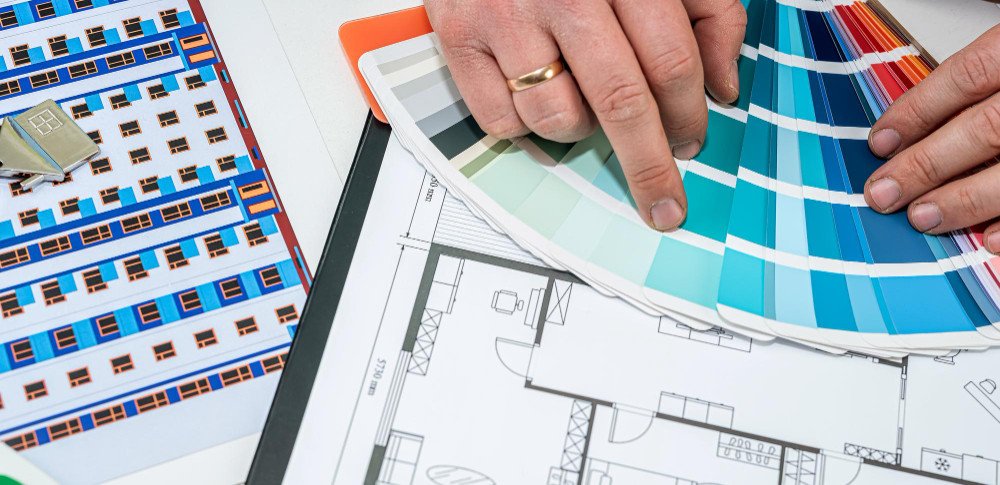Restoration & Refurbishment
Topics of Interest
Tips and Ideas |
Cost Estimation |
Key Considerations |
Trends and Techniques |
Do you want to know what a difference between Renovation and Refurbishment is?
The main difference between renovation and refurbishment is that renovation involves structural changes to a building, while refurbishment focuses on improving a building's appearance
Renovation
Renovation Involves structural changes to a building, such as removing walls, dividing rooms, or converting rooms. Renovations are usually more expensive, time-consuming, and require more effort than refurbishments. Renovations may also require planning permission and Building Regulations approval.
Refurbishment
Involves improving a building's appearance and condition, such as decorating, replacing windows, or plastering walls. Refurbishments are usually less expensive, take less time, and are easier to manage than renovations. Refurbishments may also include retrofitting to make a building more sustainable and energy efficient.
Tips and Ideas
Renovating or
refurbishing a house is an exciting endeavour, but it requires careful
planning. Here are some key considerations:
Budget: Set a
realistic budget that includes materials, labour, permits, and unexpected
expenses. Always have a contingency fund.
Goals and
Priorities: Determine what you want to achieve with the renovation. Prioritize
projects that enhance functionality, aesthetics, and resale value.
Design and
Style: Consider the overall design and style of your home. Aim for a cohesive
look that complements the existing architecture.
Building
Regulations and Permits: Check local building codes and regulations. You may
need permits for structural changes, electrical work, or plumbing.
Structural
Integrity: Assess the condition of the existing structure, including the
foundation, walls, and roof. Address any issues before starting cosmetic
renovations.
Energy
Efficiency: Consider energy-efficient upgrades, like better insulation,
energy-efficient windows, and appliances, to reduce long-term costs.
Timing and
Schedule: Create a realistic timeline for the renovation. Factor in potential
delays due to weather, supply chain issues, or contractor availability.
Professional
Help: Decide whether to hire professionals for certain tasks, like electrical
or plumbing work. Ensure you choose reputable contractors.
Future Needs:
Think about your long-term needs. Will the changes accommodate future family
growth or lifestyle changes?
Impact on
Neighbours: Consider how your renovation might affect your neighbours,
especially regarding noise and aesthetics.
Sustainability:
Explore sustainable materials and practices, such as recycling old materials
and choosing eco-friendly products.
Functionality:
Ensure that the renovated spaces will be functional for your daily life,
considering traffic flow, storage, and usability.
By taking these
factors into account, you can help ensure a successful renovation that meets
your needs and enhances your home.
Cost Estimation
Typical Costs
Including Material and The Works Involved in a House Renovation:
Here’s a
breakdown of typical costs and the work involved in various house renovation
projects:
|
Works Included in House Renovation |
Costs Low-High (excl vat)
|
Works Involved in Particular Task |
|
.
Kitchen Renovation |
£10,000
to £30,000+
|
Cabinetry
installation Countertop
replacement Appliance
upgrades Plumbing
and electrical work Flooring
installation
|
|
Bathroom
Renovation
|
£5,000
to £15,000+ |
Installing
new fixtures (toilet, sink, shower/bath) Tiling
and flooring Plumbing
updates Electrical
work (lighting, outlets)
|
|
Living
Room/Dining Room Renovation |
£5,000
to £20,000+
|
Flooring
updates (carpet, hardwood, laminate) Wall
treatments (painting, wallpaper) Built-in
furniture or shelving Lighting
updates
|
|
New
Heating System |
£5000-£7500+
|
Piping
Radiators Combi
Boiler |
|
New
Utility Connections |
£1500-£5000
|
In
utility connections as we know there is 3 basic connections which every it
requires include Gas, Water and electric. The price depends on the route of
the supply and effort requires doing the work. |
|
Rewiring |
£4500-£8000 |
This
includes all standard fitting for a 3 bedroom house. |
|
Plastering |
£5000-£10000 |
This is
the price for a standard house in UK
to re plaster, but the price can be vary from house to house . |
|
New
UPVC Windows |
£3000-£5000 |
The
average cost of new upvc windows can be vary with quantity or sizes. |
|
Kitchen |
£6000-£18000 |
The
price includes from an average to high standard kitchen remodelling and can
be more if the customer wants some high level finish or the kitchen size is
bigger than normal. |
|
Toilet |
£6000-£10000 |
A
standard 3set toilet with new piping can cost you from 6000£ then it depend
up to what level you want to spend. |
|
New
Roof |
£180-£350
sq/m |
Usually
the roofer they calculate the roof in sq/m and charge the customer. Again we
can sit one example to all because every house usually is different in size
and requirements. |
How much a house construction can be cost in UK per square meter?
Extensions
Cost: £1,200 to
£2,000 per square meter
Work Involved:
Foundation work
Framing and
roofing
Windows and
doors installation
Electrical and
plumbing work
How much a full 3 bed room house renovation in UK can be cost with structural changes?
Whole-House Renovation
Cost: £50,000
to £200,000+
Work Involved:
Structural
changes (walls, ceilings)
Full electrical
and plumbing updates
New flooring
throughout
Kitchen and
bathroom renovations
Exterior
improvements (roofing, siding)
What additional cost during a renovation house should be considered?
Permits:
Depending on the scope, you may need planning permission, especially for extensions
or structural changes.
Contingency
Budget: Always set aside 10-20% for unexpected expenses.
DIY vs.
Professional: Some work can be DIY, but hiring professionals for major projects
is advisable for quality and safety.
Final Thoughts
For the best results,
obtain detailed quotes from multiple contractors and ensure you have a clear
plan in place before starting your renovation.
Key Considerations When Hiring
Hiring a
builder for a house conversion or refurbishment is a significant decision that
requires careful consideration. Here are the key factors to keep in mind:
Qualifications
and Experience: Check the builder’s qualifications, certifications, and
relevant experience in similar projects. Look for someone with a solid track
record in conversions or refurbishments.
References and Reviews:
Client
Feedback: Ask for references from previous clients and check online reviews to
gauge their reputation and reliability.
Search for the
Trusted Trade People on https://buildersvalley.com/
At Builders
Valley you can find a verity of professional trade persons not only you indeed
even any kind you may need in future.
Portfolio of
Work: Request to see examples of their completed projects. This will give you insight
into their style and the quality of their workmanship.
Detailed
Quotation: Obtain a comprehensive quotation that includes all costs (labor,
materials, permits, etc.). Make sure it clearly outlines the scope of work to
avoid hidden fees later.
Insurance and
Guarantees: Ensure the builder has adequate insurance, including public
liability and employer's liability coverage. Inquire about warranties for the
work and materials used.
Timeline and
Schedule: Discuss the expected timeline for the project. Ensure the builder can
commit to a schedule that fits your needs and is realistic about potential
delays.
Communication
Skills: Choose a builder who communicates clearly and promptly. Good
communication is crucial for addressing questions and concerns throughout the
project.
Understanding of Regulations: Ensure the builder is familiar with local building regulations, planning permissions, and necessary permits. They should handle these aspects or guide you through the process.
Payment
Structure: Discuss the payment terms upfront. Be cautious about making large
upfront payments; consider structuring payments based on project milestones.
Workmanship
Quality: Ask about their subcontractors, if any, and ensure they uphold the
same quality standards. Verify that they use skilled trades people for
specialized tasks.
Project
Management: Inquire about how they manage projects. A good builder should have
a clear process for overseeing the work, coordinating subcontractors, and
maintaining quality control.
Flexibility and
Problem-Solving: Assess their ability to adapt to unexpected issues or changes
during the project. A good builder should be resourceful and proactive in
addressing challenges.
Post-Project
Support: Discuss any aftercare services they offer. A reputable builder should
be available for follow-up questions or issues that may arise after the project
is completed.
By considering
these factors, you can choose a builder who will ensure a successful conversion
or refurbishment that meets your expectations and enhances your home.
Trend and Techniques
House
renovation and refurbishment trends are constantly evolving as homeowners seek
to improve aesthetics, functionality, and sustainability. Here are some of the
latest trends in this space:
1. Sustainable Design
Eco-Friendly Materials:
Increasing use of sustainable materials such as bamboo, reclaimed wood, and
recycled metals.
Energy
Efficiency: Upgrading to energy-efficient windows, insulation, and appliances
to reduce carbon footprints.
2. Smart Home Technology
Integrated Systems:
Home automation for lighting, heating, security, and appliances that can be
controlled via smart phones or voice assistants.
Smart
Thermostats and HVAC Systems: Improved energy efficiency and comfort with
advanced climate control.
3. Open-Concept Spaces
Flexible
Layouts: Removing walls to create open, multifunctional spaces that promote
social interaction and flow.
Zoned Areas:
Defining spaces within open layouts using furniture, area rugs, or different
flooring.
4. Biophilic Design
Natural
Elements: Incorporating plants, natural light, and organic materials to connect
indoor spaces with nature.
Indoor Gardens:
Creating green spaces, vertical gardens, or living walls for aesthetics and air
quality.
5. Bold Colors and Patterns
Accent Walls:
Using bold paint colors or wall paper to create focal points in rooms.
Mixed Textures:
Combining different materials and patterns for visual interest.
6. Functional Outdoor Spaces
Outdoor Living
Areas: Expanding patios and decks to create outdoor kitchens, dining areas, and
lounges.
Sustainable
Landscaping: Utilizing native plants and xeriscaping to reduce water usage and
maintenance.
7. Multipurpose Rooms
Home Offices:
Designing spaces that can function as work areas during the day and relax at
night.
Flexible
Furniture: Using furniture that can adapt to various needs, like Murphy beds or
foldable tables.
8. Vintage and Retro Elements
Mixing Old and
New: Incorporating vintage pieces, such as antique furniture or retro fixtures,
into modern designs for character and charm.
Mid-Century
Modern Revival: A continued interest in mid-century design elements in
furniture and decor.
9. Wellness-Focused Spaces
Spa-like
Bathrooms: Creating luxurious bathrooms with features like soaking tubs,
rainfall showers, and mood lighting.
Quiet Zones:
Designating areas in the home for relaxation, such as meditation corners or
reading nooks.
10. Minimalist Aesthetics
Clutter-Free
Spaces: Emphasizing simplicity with clean lines, neutral colours, and
functional furniture.
Quality Over
Quantity: Focusing on fewer, high-quality pieces that make a statement.
These trends
reflect a growing desire for homes that are not only beautiful and functional
but also environmentally responsible and connected to the well-being of their
inhabitants. When considering a renovation, it's essential to prioritize what
works best for your lifestyle and personal taste!









